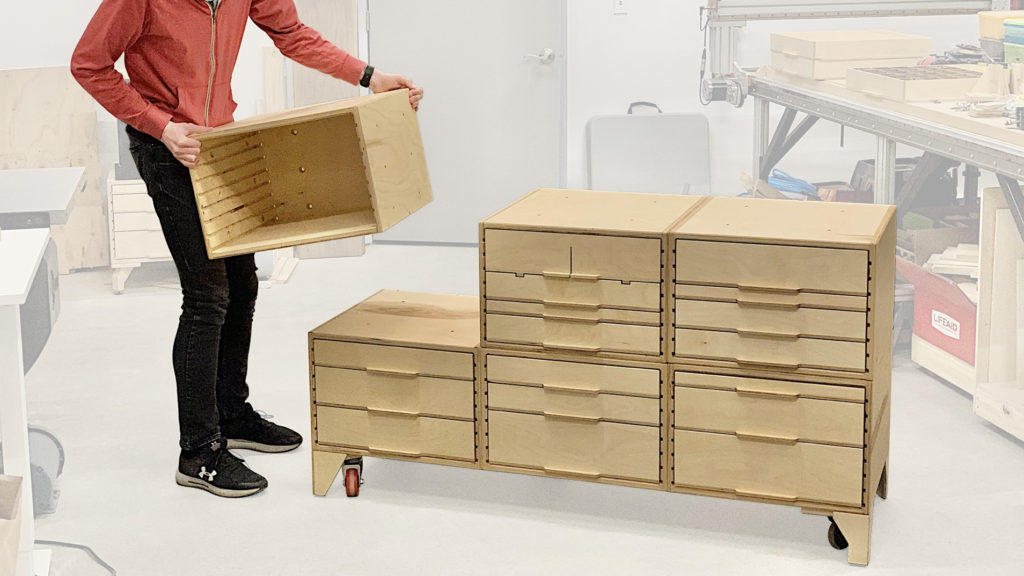
I recently moved, and had to leave behind my big workbench / tool cabinet, because it was too big to move. I wanted to build another one, but didn’t want to run into this problem again, so I figured I should break up the cabinet into smaller pieces. This led to the idea of making them all a standardized size, so they can be stacked and reconfigured as my needs change, and making them structural on their own, so they can be used to build workbenches and tool stands.
From there I spent several months trying different versions in CAD and even building a couple of prototypes to help me determine the optimal dimensions, drawer slide spacing, and connecting hole positions. I experimented with different techniques to build them, and adjusted my design to make the build as easy and fool-proof as possible. This is the result of all that R&D.
Design highlights
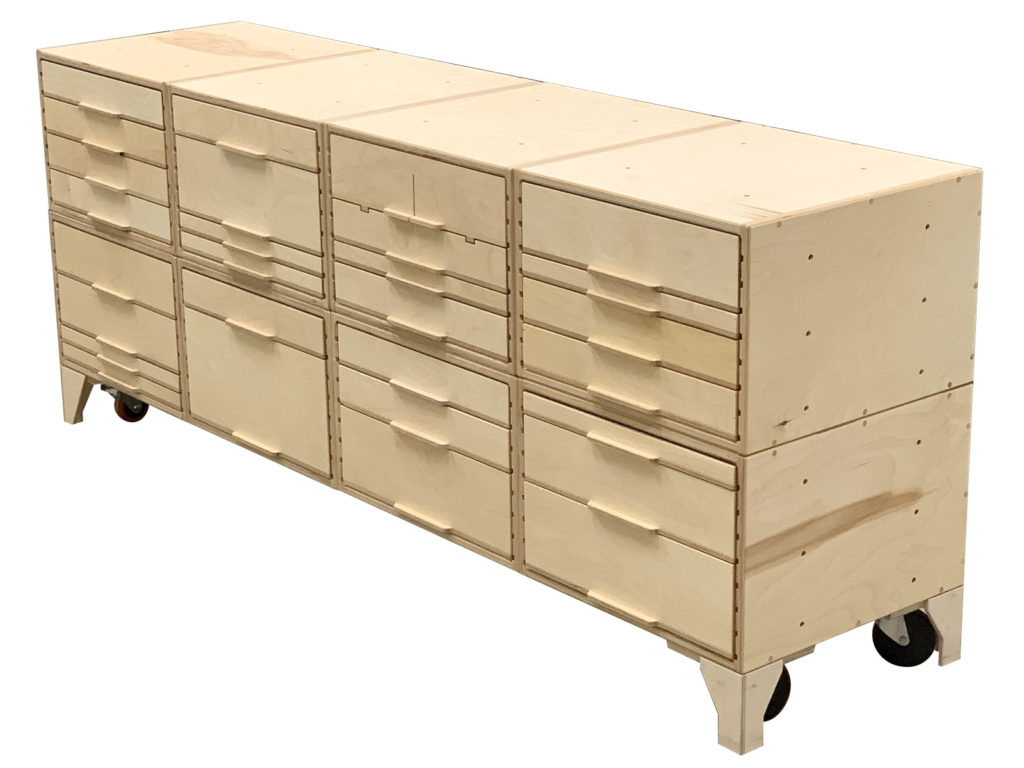
Simplicity, Simplicity, Simplicity.
One of my highest priorities was to keep this system simple and easy to build. It doesn’t use any hardware at all, except for some wood screws, and some M6 or 1/4” bolts to join the elements together. Everything is made from one of two thicknesses of plywood. The slides and handles are integrated into the drawer bottom, instead of being separate parts.
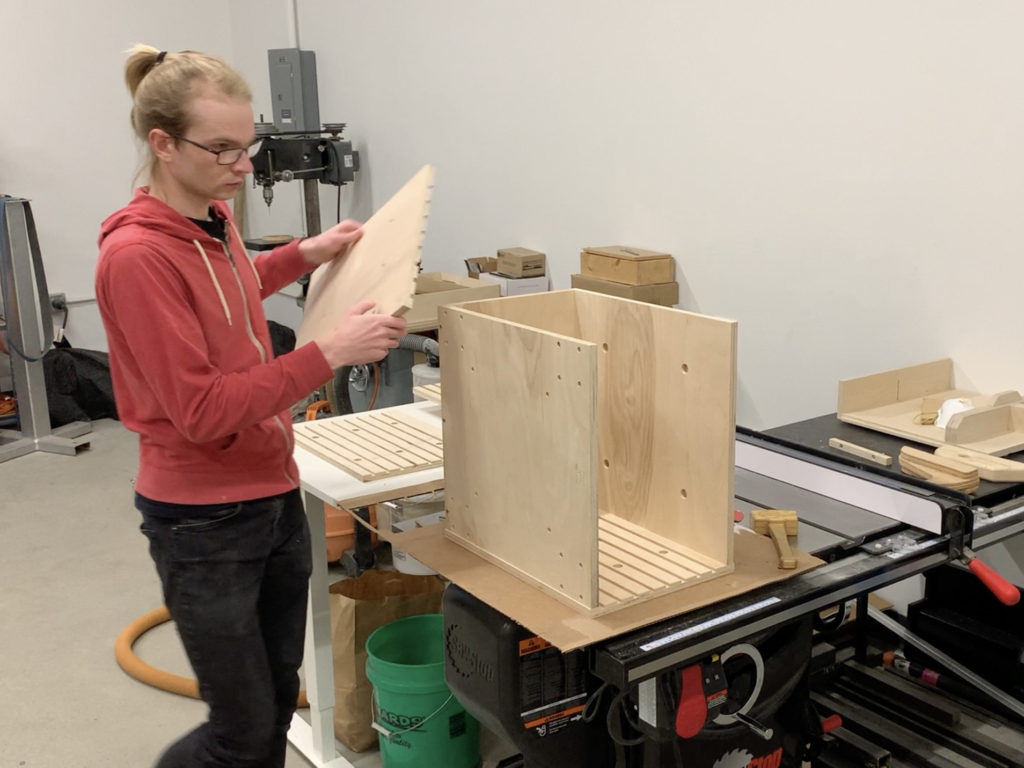
Optimized for easy construction with limited tools
From the very beginning, the build process was a part of the design. The system can be built with only four power tools: a table saw, a router, a drill press (or a handheld drill with a guide), and a nail gun. No special joinery is needed anywhere in the system, only butt joints. Where possible, parts are only rough-cut, and then trimmed with a router after gluing.

The Cabinet Module
The primary building block of this system is a 508x508x342mm (20x20x13.5”) cabinet, which is strong enough to be used as the base of a workbench. Each cabinet has slots to accept interchangeable, modular drawers, which you can read more about below. There are holes on all sides of the cabinet for bolting it to adjacent cabinets, and for bolting on table tops as well as feet or casters. The 13.5” height maximizes flexibility: single cabinets can be used as tool stands or seating. Double-stacked cabinets can be used as a workbench, or as a desk if you leave the feet off. Triple-stacked cabinets can be used as a high workbench, a standing desk, or a bar.
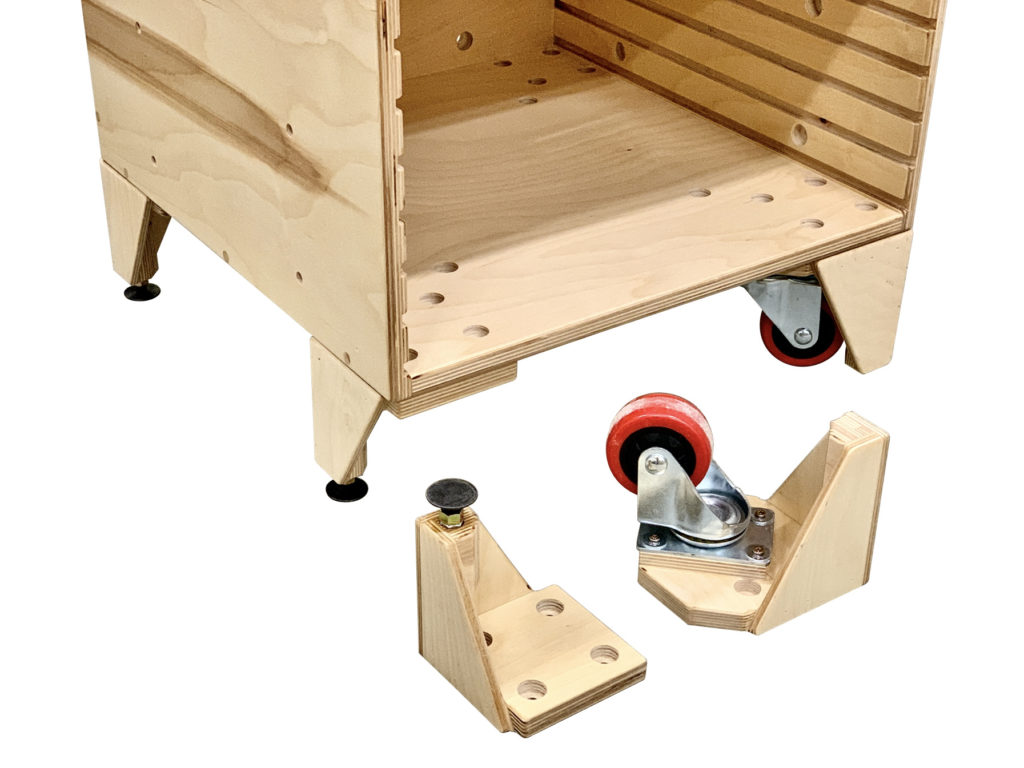
Interchangeable, indexable feet
Once you’re happy with your cabinet configuration, you can add a set of Modular Feet to the four corners. Each cabinet has bolt holes for attaching these. The Feet can be rotated 90° at a time to optimize for stability vs toe-kick clearance. The height of each Foot is exactly 1/3 the height of the Cabinets, which coincides with the vertical hole spacing in the Cabinets. This means you can put the Feet on one Cabinet and leave them off of the adjacent one, and the holes will still line up so you can bolt them together. You can learn more about the Feet and download plans for them here.
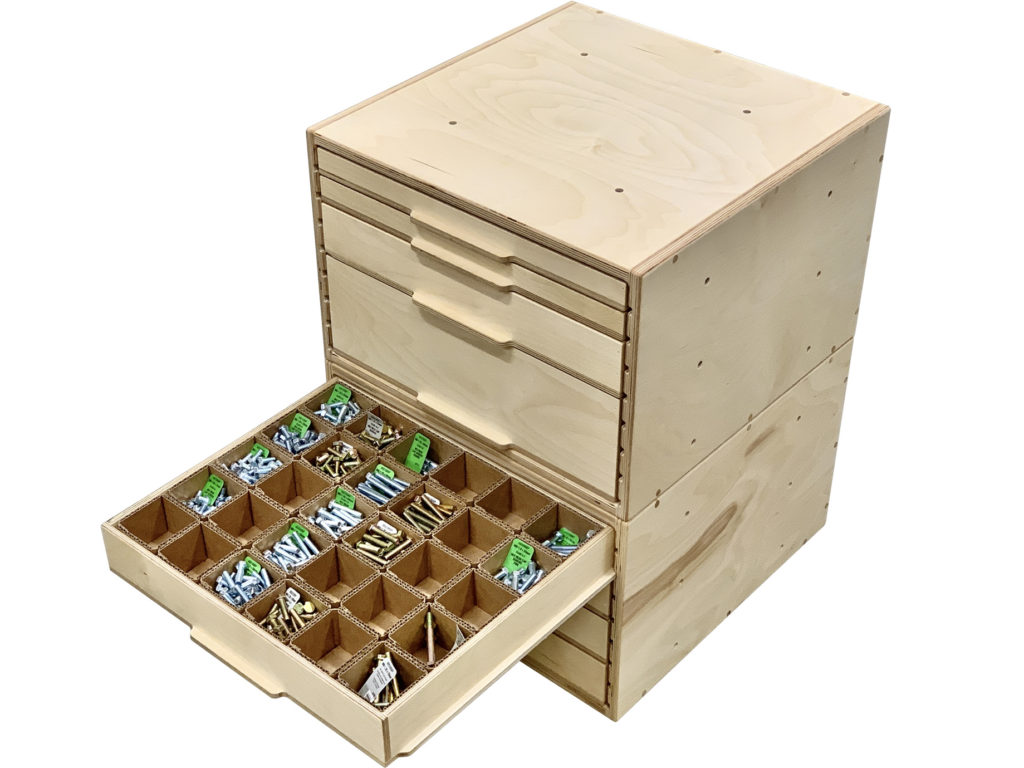
Interchangeable, modular drawers
The height of each drawer is a multiple of 38mm (~1.5”), so any drawer can fit in any slot, in any cabinet. You can choose to fill a cabinet with eight 1.5” drawers, four 3” drawers, two 6” drawers, or even one giant 12” deep drawer if that’s your thing. You can mix & match and change your mind as much as you like. The inside of each drawer is exactly 450x375mm, so it fits a 6×5 grid of 75mm boxes, such as my homemade Cardboard Hardware Boxes. This is ideal for storing hardware, but you can also make inserts for holding your tools, etc. It’s modular all the way!

Detailed, step-by-step plans
I offer highly detailed, step-by-step build instructions to help you recreate this project. The plans tell you all the dimensions and guide you through the process to minimize the possibility of mistakes. The plans are in PDF format so they can be viewed on any device or printed. Dimensions are in millimeters. The button below will take you to Etsy to complete the purchase and instantly download your plans.
Still have questions? Check out the frequently asked questions page or contact me.
